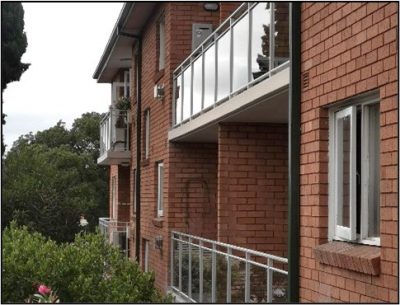“We fix broken buildings” is a simplistic refrain heard from some of us at Everest Contracting when asked what we do as remedial builders in Sydney, Australia.
“Oh, like the Opal!” is now a common response.
The Opal Tower in Homebush, of recent renown for its serious concrete cracking and building failures only two years after construction, is an extreme example of the types of the building defects we resolve.
Opal is unusual. Very few residential buildings in Australia have ever been evacuated due to construction defects, and fewer still because of structural cracking.
High-rise buildings are often hastily constructed. When issues arise such as cracking and water leaks, this is usually evidence that at some point the construction process did not comply with Australian Standards.
There are a range of issues that can arise due to incorrect decisions during the building process that can contribute to building problems. These include use of unsafe cladding systems, incorrect waterproofing techniques, incorrect roofing materials and installation methods, unregulated swimming pools and such.
In our experience, many construction defects in multi-unit residential buildings are due to waterproofing failures.
You should be aware of the different kinds of defects that may be present in your building and what kind of risks they may pose.
Look out for defects and report them to your building manager – or arrange to have them inspected by a remedial builder.
Some of the more superficial issues such as painting, flooring and tiling may be possible to manage without huge costs being incurred.
Potentially serious defects to report or arrange inspection include:
Structural Cracking
Uneven movement of a building’s foundations due to slope failure or changes in soil moisture levels or compacting of loose soil, are common causes of structural cracking. This is usually preventable if builders follow engineering specifications during the construction process.
Cracks appearing from windows and doors or in ceilings and walls, or gaps under internal walls and broken cornices are all potential signs of structural cracking.
Not all cracks are an indication of structural cracking however. Poor workmanship where plasterboard is either not nailed adequately or back blocked can cause cracks in ceilings or walls. These cracks usually run alongside the plasterboard joints.
Concrete Cancer
Concrete Cancer is one of the most prevalent structural issues, which occurs when the steel reinforcement inside a concrete slab is exposed to water and begins to rust. As the steel rusts, it begins to expand, causing cracks and breakages in the concrete. These cracks let in even more water, causing the problem to worsen and spread.
Pooling water
Pooling water or ‘ponding’ describes the collection of water in areas other than dedicated water outlets, resulting in unwanted puddles. These puddles become problematic as they can cause flooding, leaking or water ingress.
Water ingress
Water ingress is the term used to describe the permeation of water into the structure of a building. Water ingress can range in severity from a small leak to a wide scale permeation which causes significant damage to the building’s structure or to internal elements. It can cause both aesthetic, immediately observable defects such as water stains as well as serious latent defects such as concrete cancer. Water ingress is often more severe in coastal areas where rain and high wind combine to allow water to reach cavities it may otherwise not have reached.
If you experience any of these issues, or have other concerns with your building, please contact us for an inspection and our recommendations for repairing your property.





